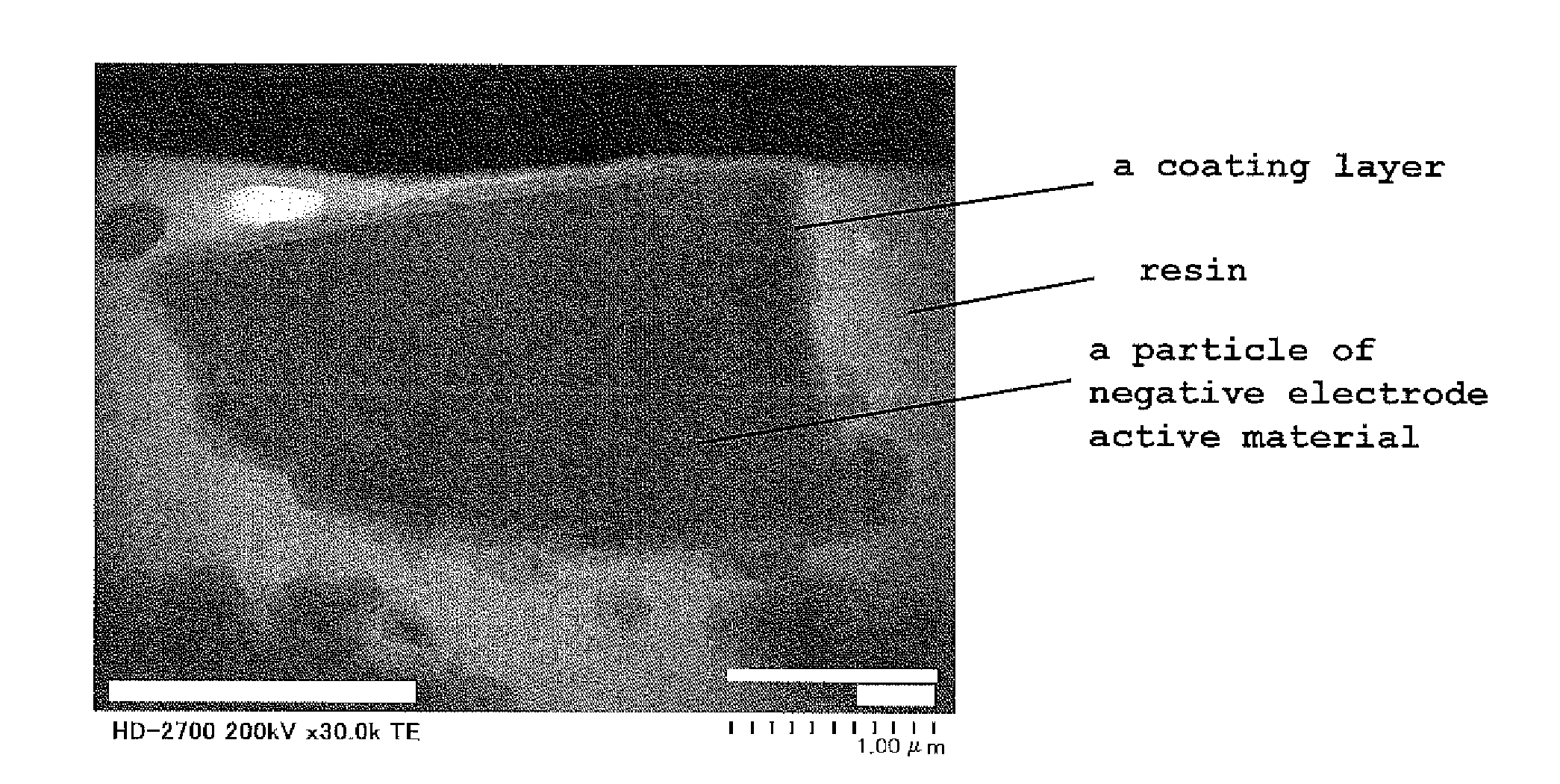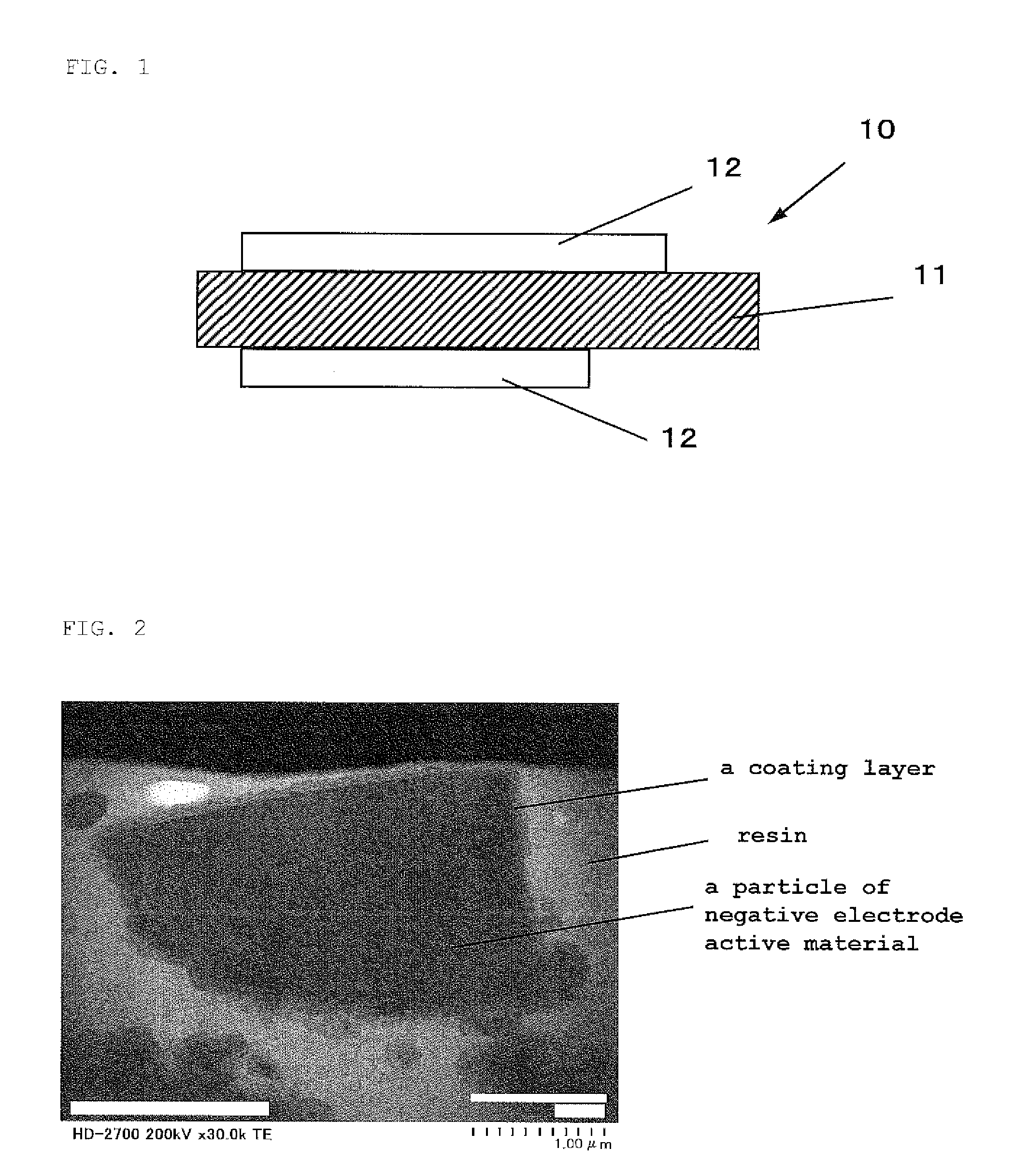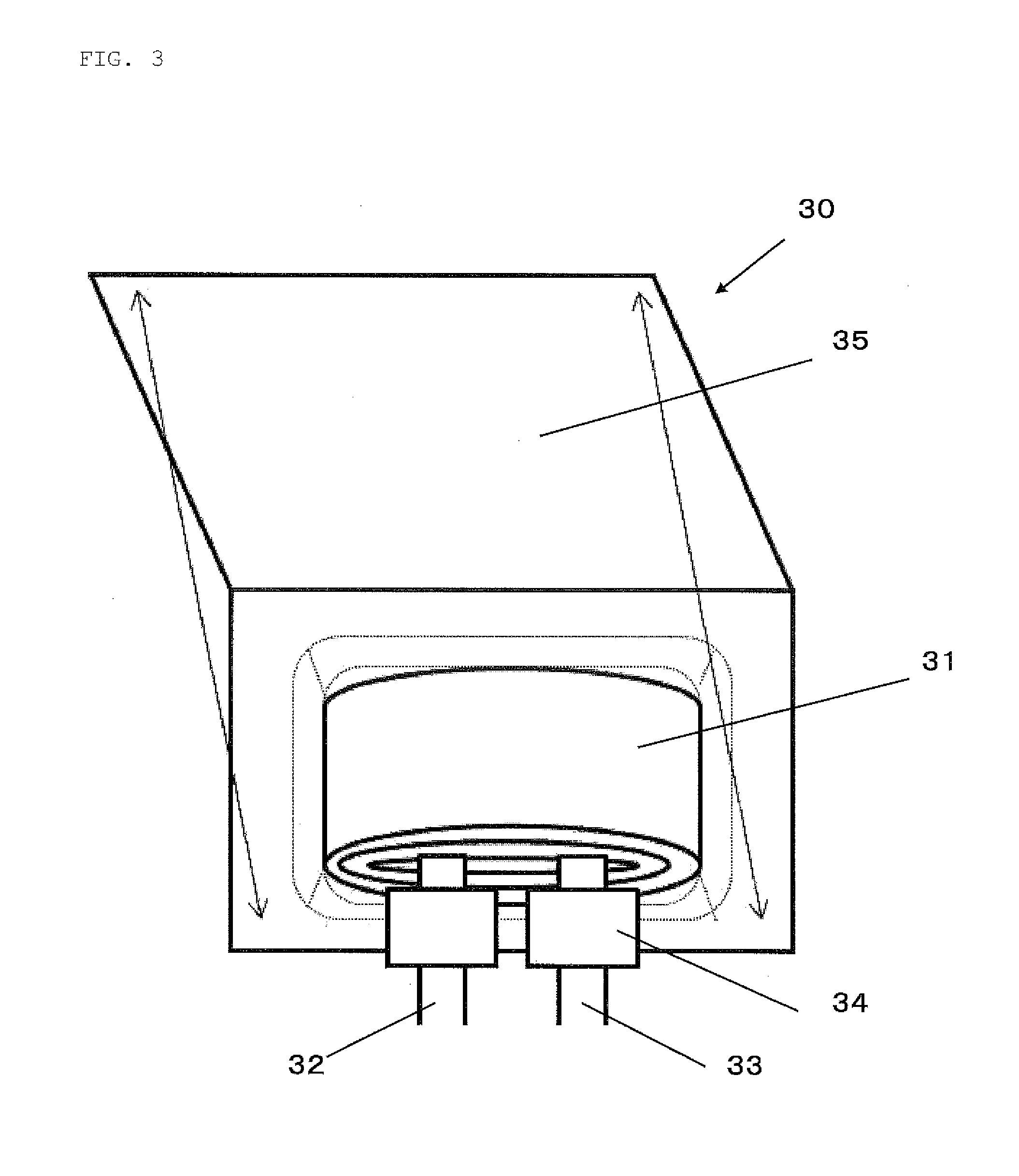Negative electrode active material, raw material for a negative electrode active material, negative electrode, lithium ion secondary battery, method for producing a negative electrode active material, and method for producing a lithium ion secondary battery
a technology of active materials and negative electrodes, which is applied in the direction of batteries, sustainable manufacturing/processing, cell components, etc., to achieve excellent cycle characteristics and initial charge/discharge characteristics, high capacity, and high capacity
- Summary
- Abstract
- Description
- Claims
- Application Information
AI Technical Summary
Benefits of technology
Problems solved by technology
Method used
Image
Examples
example 1-1 to example 1-5
[0236]Laminate film type secondary batteries 30 shown in FIG. 3 were prepared according to the following procedure.
[0237]First, a positive electrode was prepared. As a positive electrode active material, 95% by mass of LiCoO2 of a lithium cobalt composite oxide, 2.5% by mass of a positive electrode conductive assistant agent, and 2.5% by mass of a positive electrode binder (polyvinylidene fluoride: PVDS) are mixed to form a positive electrode mixture. Subsequently, the positive electrode mixture is dispersed in organic solvent (N-methyl-2-pyrrolidone: NMP) to form paste-state slurry. Then, the slurry was applied onto both side of the positive electrode current collector by a coating apparatus having a die head, and subsequently dried by a hot-air drying apparatus. In this case, a positive electrode current collector with a thickness of 15 μm was used. Lastly, compression molding was performed by a roll-press.
[0238]Then, a negative electrode was prepared. As a negative electrode acti...
example 2-1 to example 2-4
[0266]Secondary batteries were prepared in a manner similar to that of Example 1-1 to Example 1-5. However, A (Si) / B (SiO2) was fixed to 2, and an oxygen content in the bulk was varied. In this case, the oxygen content of the deposit was changed by changing a ratio of the starting material to be vaporized or a vaporizing temperature.
[0267]Each “x” in SiOx of Example 2-1, Example 2-2, Example 2-3, and Example 2-4 was 0.5, 0.7, 1.2, and 1.6 respectively.
[0268]The cycle characteristics and the initial charge / discharge characteristics of the secondary battery were evaluated on Example 2-1 to Example 2-4 in a manner similar to that of Example 1-1 to Example 1-5.
example 3-1 to example 3-12
[0275]Secondary batteries were prepared in a manner similar to that of Example 1-1 to Example 1-5. However, A (Si) / B (SiO2) was fixed to 2, “x” in SiOx was fixed to 0.9, and a state of the generated content (lithium compound) was varied by controlling electric potential, electric current, and a method for insertion / elimination of Li in the preparation of the lithium compound.
[0276]Moreover, a state of the content was changed to more stable material by adjusting a gas atmosphere and thermal drying after it was generated.
[0277]For example, Li4SiO4 is separated to Li2SiO3 and Li2CO3 by heating under carbon dioxide atmosphere.
[0278]By adopting these reaction and so on to realize the optimum bulk state, improvements of a capacity retention ratio and initial efficiency were realized.
[0279]The obtained Li compounds can be confirmed by XPS, for example, Li4SiO4 is given at the binding energy near 532 eV, and Li2SiO3 is given at the binding energy near 530 eV.
[0280]The obtained Li compounds ...
PUM
| Property | Measurement | Unit |
|---|---|---|
| chemical shift | aaaaa | aaaaa |
| chemical shift | aaaaa | aaaaa |
| chemical shift | aaaaa | aaaaa |
Abstract
Description
Claims
Application Information
 Login to View More
Login to View More - R&D
- Intellectual Property
- Life Sciences
- Materials
- Tech Scout
- Unparalleled Data Quality
- Higher Quality Content
- 60% Fewer Hallucinations
Browse by: Latest US Patents, China's latest patents, Technical Efficacy Thesaurus, Application Domain, Technology Topic, Popular Technical Reports.
© 2025 PatSnap. All rights reserved.Legal|Privacy policy|Modern Slavery Act Transparency Statement|Sitemap|About US| Contact US: help@patsnap.com



